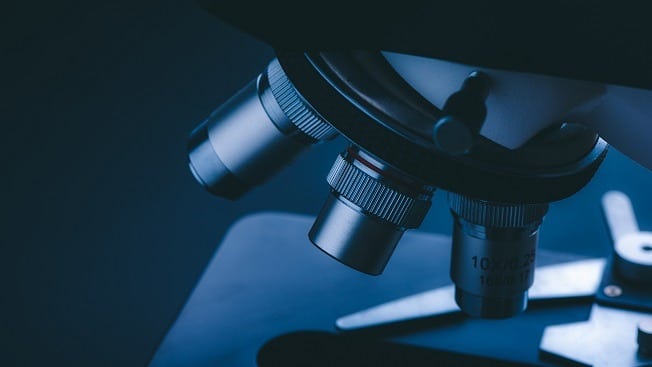The prostate biopsy procedure is a diagnosis method performed to detect whether prostate cancer is present or not.
It usually follows a PSA test that revealed an abnormal number of prostate-specific antigens in a man’s blood. The urologist may have recommended you undergo a prostate biopsy procedure to determine an accurate diagnosis.
Here is what you need to know and expect from a prostate biopsy.
What is a prostate biopsy procedure?
During a prostate biopsy, the doctor removes samples of suspicious tissue from the prostate in order to check them in the lab. Due to the fact that the prostate is a small gland, walnut-shaped, the prostate biopsy can only be performed by experienced doctors.
In general, a needle is used to collect the sample, a fact that transforms the prostate biopsy into an invasive procedure. After the doctor collects a number of tissues, they are examined under a microscope. If cancer cells are present in the samples, then the pathologist will determine the aggressiveness of the tumor. Based on these data, the most appropriate treatment options for prostate cancer will be recommended by your urologist.
Cons of the prostate biopsy procedure
There are many pitfalls to this diagnosis method. One of them is that the classic prostate biopsy procedure is painful and sometimes inefficient. It is actually based on the likelihood to take samples from cancerous tissue. But, if this tissue is missed, but it’s still present, the diagnosis is not accurate.
Another problem is that many prostate biopsies are unnecessary at the moment they are performed. Many men have to undergo this procedure just to be said that they do not have prostate cancer. This is often named overdiagnosis, a fact that leads to anxiety and unnecessary pain. Prostate biopsy pros and cons need to be taken into account in order to determine whether or not you need to undergo this invasive procedure.
There is also great news. The need for more accurate biopsies was met by the development of new, modern techniques
A new prostate biopsy procedure
There is a new prostate biopsy procedure that reduces the risk o infections and pinpoints the exact location of prostate cancer. This outpatient procedure is called Transperineal ultrasound-guided MRI fusion biopsy.
During this technique, the rectum is avoided. The needle is inserted through the perineum, directly into the prostate. The MRI combined with the ultrasounds project a better picture of the prostate gland. Thus, inaccurate diagnosis is now avoided almost entirely.
If the classical biopsy is considered a blind technique, where doctors just collect random samples of the prostate, this new prostate biopsy sheds light on the process.
The 12-core ultrasound-guided procedure is considered the gold standard for biopsies from now on. Magnetic Resonance Imaging (MRI) completes the procedure providing more insights and more accuracy. Practically, this technology fuses ultrasound images taken during the ebiopsy with MRI images. This advancement allows the doctor to target suspicious tissue in a real-time biopsy. Imaging and biopsy are completed in just one sitting. This way, patients are being spared unnecessary pain if cancerous tissue is not there.
Is transperineal prostate biopsy an option?
Transperineal biopsy is different from transrectal biopsy in terms of the inserting point. Commonly, prostate biopsies are performed through the rectum. But the transperineal prostate biopsy has its own advantages.
The transrectal approach has many downsides. It is often associated with life-threatening infections, like sepsis. Also, some areas of the prostate are undersampled because the transrectal approach does not allow the needle to reach them. This means significant prostate cancers may be missed. But, if the prostate biopsy is performed via a transperineal approach, these problems are being avoided.
This approach helps avoid threatening infections associated with transrectal biopsies. Moreover, if the transperineal prostate biopsy is ultrasound-guided, its accuracy is even higher. The ultrasound probe is still placed into the rectum, but the needle is inserted through the perineum skin. This way, the needle avoids being contaminated by the rectum bacterias.
Just one or two skin punctures are needed, performed under local anesthesia. The transperineal biopsy may benefit patients with:
- History of prostatitis
- Inflammatory bowel disease
- Infections from previous biopsies
- Rectal bleeding etc
Transrectal ultrasound-guided biopsy (TRUS) can detect prostate cancer
Transrectal ultrasound-guided biopsy is similar to the procedure described above but does not involve MRI use. It is an advanced type of needle biopsy that looks for prostate cancer cells.
The biopsy needle is inserted through the rectum using a transrectal ultrasound scanner. During the biopsy, you have to lie down on your left side. You will be under local anesthesia, to numb the rectum area. An ultrasound is inserted into the rectum to examine the area. The needle is pushed along with the ultrasound probe into the prostate. Each time the doctor takes a sample, you will feel a little uncomfortable. The whole procedure takes about 20 minutes.
The good news is that you go home 30 minutes after the procedure. It is very important to drink a lot of water after the TRUS biopsy. The fact the needle biopsy is combined with ultrasound makes this type of biopsy a more accurate approach.
3 things you need to know before undergoing a prostate biopsy
Before undergoing a prostate biopsy procedure, take into account the following 3 recommendations:
- Have a urine infection test before the procedure. It will show will how likely it is to develop future infections after the biopsy. You can also start taking antibiotic pills 1-2 days before the biopsy
- You can eat and drink normally before and after the procedure. But, remember that you should stay hydrated all the time.
- Stop taking blood thinners, such as aspirin and warfarin 7-10 days before the biopsy
All in all, do not be afraid of this procedure. It is part of the diagnosis and always remember that early diagnosis saves lives. A prostate biopsy done early can save your life too!


